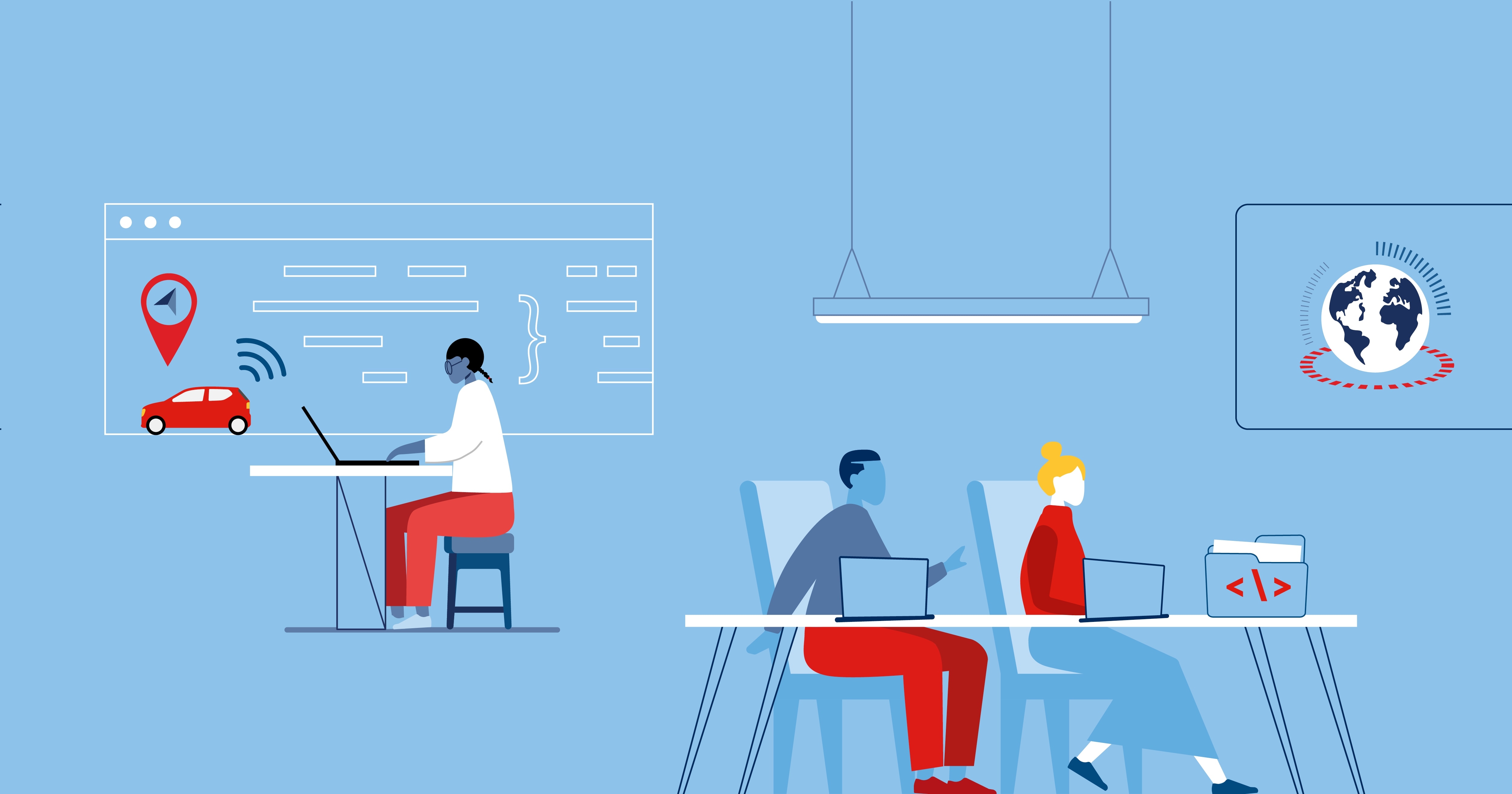
When taking any journey, we can all agree that we want the destination to be worthwhile. Our maps help us direct drivers, businesses and policymakers on their journey towards a worthy goal for everyone – a safer, cleaner, congestion-free world.
So, how do we build a map that’s set to have such a significant impact? Where does the data come from? TomTom’s Java engineers hold all the answers, working within the Maps Product Unit (PU Maps) to bring our maps to life.
Before we come to that, however, let’s consider what our maps do. Fundamentally, our maps support online navigation – they display a real-time image of the world, constantly updated for accuracy. While you can turn to a TomTom map to find the fastest route to your destination or the nearest EV charging point, the use cases often go beyond that. They enable autonomous vehicles, for instance, embedding key data within a vehicle’s infotainment system so that it can identify sharp turns in the road, traffic and more as it travels.
The data that drives all of this and more comes from a multitude of sources. Ranging from LiDAR and car sensor traces to governmental sources and satellite imagery, these sources are updating constantly, making us aware of changes in reality. The challenge for our Java engineers is to receive, sort and interpret these changes in a quick and effective way, so the map represents this reality.
How do the Java engineering teams of PU Maps achieve this, day in and day out? By harnessing their understanding of the maps and everything that goes in and out of them, in order to successfully manage the automated processes that make all this data manageable in the first place.
Mapping out our updates with PU Maps
To deliver a high-quality map product without delay, PU Maps needs the best technologies to simplify how the unit’s Java engineers integrate our data. TomTom has made huge strides in this area already.
Consider an option like machine learning, for example. This cutting-edge technology supplements our software engineering, taking away the stress of manually identifying and updating valuable data elements.
However, “supplement” is the standout word here – the teams within PU Maps have a strong part to play in testing these technologies and seeing which works best with the huge amounts of data at our disposal. And it all starts by looking at the source of this data.
The challenge goes beyond identifying what the source of any new data is – we need to think of where the source is, and in some cases, how they are operating. Technologies like machine learning can associate certain sources with inputs, like a car sensor communicating a change as it goes, but it all needs verification by PU Maps. Our engineers are essential to the way our maps operate – they understand the sources and how updates should be applied based on these sources.
Teamwork makes the dream work for our Java engineers
With so much data from so many sources, PU Maps and its teams know how important it is to stay connected and work together. That’s why our engineers organize pairing sessions to code simultaneously; meetings are another great opportunity for sharing ideas and brainstorming along the way.
While PU Maps handles our maps, there’s plenty of cross-disciplinary collaboration as well. One minute, PU Maps could be guaranteeing map rules so that our Content Production Platform Product Unit (PU CPP) can shape our maps into the perfect product. The next, PU Maps will be working with the Navigation Data Standard Product Unit (PU NDS) to ensure that our map can be translated easily into an automotive-friendly format for our automaking customers.
It’s a worldwide effort that requires a global approach – this is why PU Maps maintains strong relationships both within the unit and across the whole company. Every engineer matters in the bigger picture – without our maps, we can’t shape our data to improve how we all use the road.
What can you expect as a Java engineer if you join PU Maps?
You’re seeing the scale at which TomTom thinks. That’s exactly why it’s exciting for a newcomer joining PU Maps – it plays a huge part in putting TomTom on the technological map.
By using a varied software stack with technologies such as machine learning, you’ll become an essential part of our worldwide map-making project. Using your knowledge of Java and more, you'll open the door for revolutionary approaches, creating maps that go on to serve our customers in both familiar and new ways, from the navigational aspects of driving today to the autonomous driving of tomorrow.
You’ll be supported every step of the way. In order to realize our vision of a safer, cleaner, congestion-free world, we will always succeed together. Whether that’s with a simple conversation that solves a problem or a training course that sharpens your coding skills, there’s always another route to success when it seems tough – reach out and you’ll find a warm response that extends beyond borders.
If your interest in location technology and Java engineering is similarly global, we might just be the solution for you.
Java engineer? Let’s talk.
We're always on the lookout for Java engineers to join our team and solve mobility problems for millions, helping us make the world move.
People also read
)
TomTom’s Mapmaking Platform Unit – Lots of data, lots of opportunity to grow as a Java engineer
)
Driving change for our maps – Why the Navigation Data Standard Unit excites Java engineers
* Required field. By submitting your contact details to TomTom, you agree that we can contact you about marketing offers, newsletters, or to invite you to webinars and events. We could further personalize the content that you receive via cookies. You can unsubscribe at any time by the link included in our emails. Review our privacy policy. You can also browse our newsletter archive here.
)